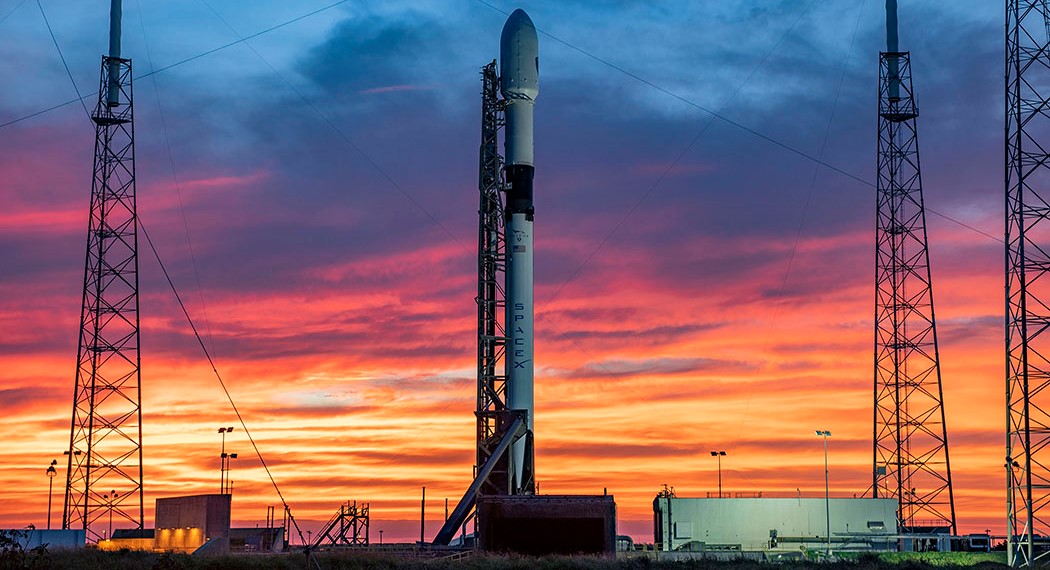
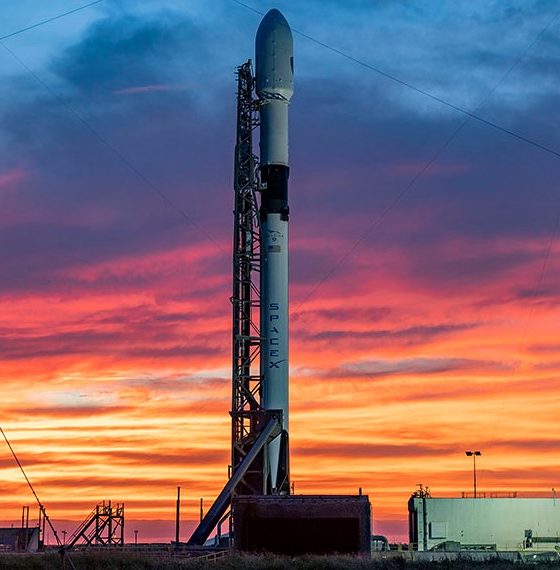
News
SpaceX eyes two Falcon 9 rocket launches, landings in eleven hours [update: just Starlink]
Update #2: The GPS III SV04 mission’s Falcon 9 rocket aborted its October 2nd launch attempt just two seconds before liftoff. SpaceX CEO Elon Musk says the vehicle’s flight computer detected an “unexpected pressure rise in the turbomachinery gas generator” of at least one of new booster B1062’s nine Merlin 1D engines. Given that Musk explicitly pointed to propulsion hardware rather than an out-of-family sensor, a substantial delay is likely.
Update: For unknown reasons, SpaceX appears to have delayed the Starlink-12 launch to October 5th. GPS III SV04 is still on track to launch tonight.
SpaceX appears to be targeting two separate Falcon 9 launches less than eleven hours apart after a pad sensor scrubbed the company’s latest Starlink-12 launch attempt.
SpaceX’s 12th operational Starlink launch and 13th overall, the mission is now up to its fourth aborted launch attempt after a weather delay on September 17th, an unspecified delay on September 27th, a weather delay on September 29th, and a ground systems delay on October 1st. Starlink-12 is now scheduled to lift off from Kennedy Space Center Launch Complex 39A (KSC Pad 39A) no earlier than (NET) 8:34 am EDT (12:34 UTC) on Saturday, October 3rd.
Up first, though, is SpaceX’s third upgraded GPS III satellite launch (Space Vehicle 04) for the US military – effectively ready to go since a few days after the Falcon 9 rocket’s September 25th static fire. Delayed from September 29th and 30th by United Launch Alliance’s (ULA) own Delta IV Heavy NROL-44 launch delays, SpaceX has confirmed that Falcon 9 is scheduled to launch GPS III SV04 NET 9:43 pm EDT (1:43 UTC) on Friday, October 2nd.
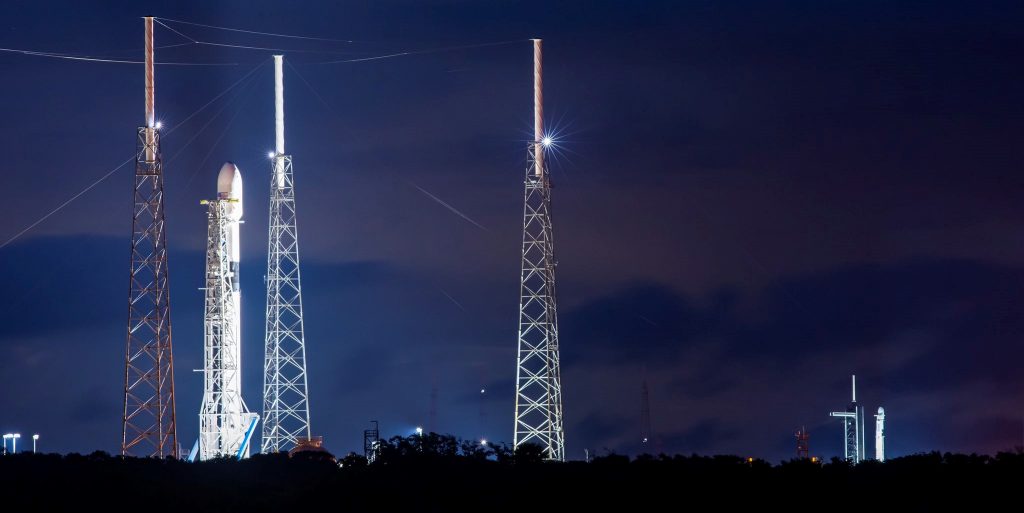
The only reason SpaceX is able to even consider attempting both East Coast Falcon 9 launches hours apart is the activation of a second drone ship (formerly based in California) earlier this year. Known as Just Read The Instructions (JRTI), the drone ship was upgraded with expanded power output and stronger thrusters and joined Of Course I Still Love You (OCISLY) in Port Canaveral, Florida. JRTI completed its first East Coast Falcon booster landing in June 2020 and both ships have more or less split recovery attempts in the months since.
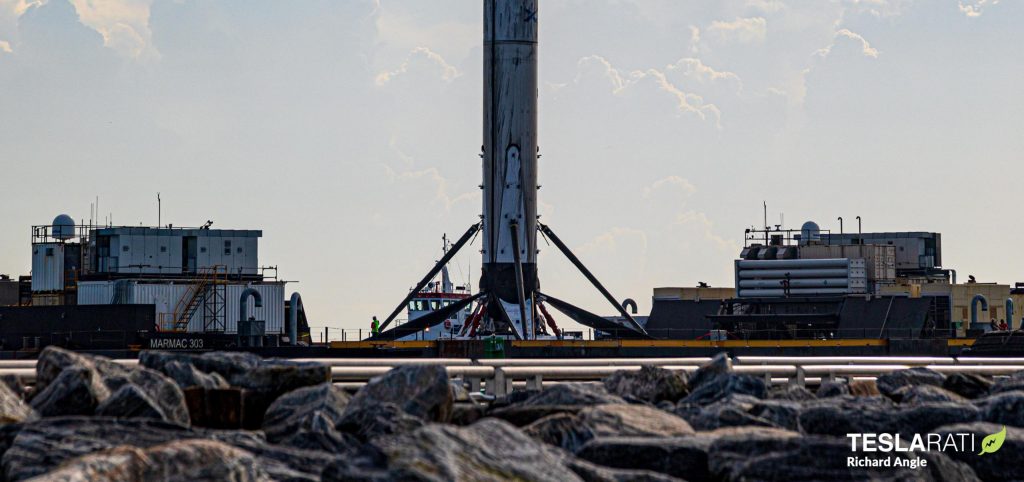
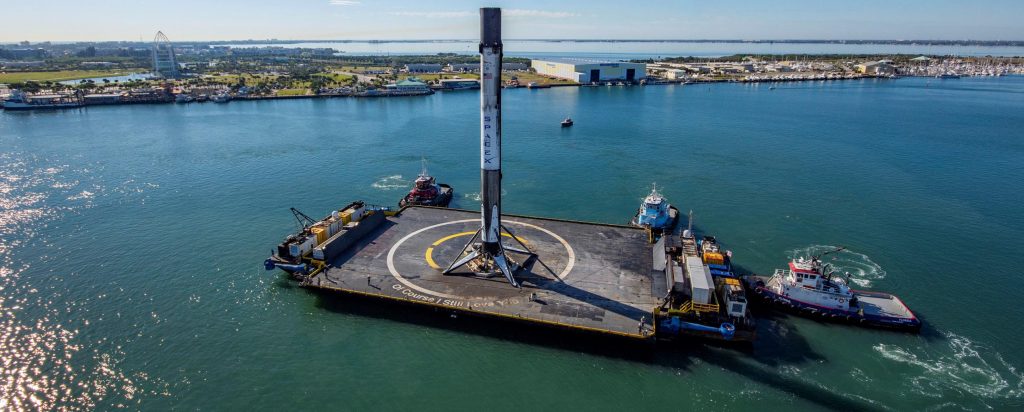
While SpaceX could technically launch East Coast missions almost simultaneously by landing one booster at sea and the other on land, the performance required from Falcon 9 for GPS III SV04 and Starlink-12 necessitates drone ship landings for both missions. Coincidentally, the missions’ launch trajectories are extremely similar, meaning that drone ship JRTI (GPS III SV04) and OCISLY (Starlink-12) are stationed just ~50 km (~30 mi) apart in the Atlantic Ocean.
Twin recovery ships GO Ms. Tree and GO Ms. Chief – outfitted with giant nets – will also be present at at least one of the two missions, each attempting to catch one of Falcon 9’s payload fairing halves.

If both missions launch on schedule and Falcon 9 boosters B1062 (GPS III SV04) and B1058 successful land aboard their respective drone ships, SpaceX could end up with two drone ships – both carrying Falcon boosters – returning to Port Canaveral at almost the same time, possibly creating the first Falcon booster traffic jam.
Weather is currently 70% and 60% go for SpaceX’s GPS III SV04 and Starlink-12 launches. Tune in around 9:25 pm EDT (01:25 UTC) to catch the first of two SpaceX launch webcasts.
Check out Teslarati’s Marketplace! We offer Tesla accessories, including for the Tesla Cybertruck and Tesla Model 3.

News
Tesla FSD fleet is nearing 7 billion total miles, including 2.5 billion city miles
As can be seen on Tesla’s official FSD webpage, vehicles equipped with the system have now navigated over 6.99 billion miles.

Tesla’s Full Self-Driving (Supervised) fleet is closing in on almost 7 billion total miles driven, as per data posted by the company on its official FSD webpage.
These figures hint at the massive scale of data fueling Tesla’s rapid FSD improvements, which have been quite notable as of late.
FSD mileage milestones
As can be seen on Tesla’s official FSD webpage, vehicles equipped with the system have now navigated over 6.99 billion miles. Tesla owner and avid FSD tester Whole Mars Catalog also shared a screenshot indicating that from the nearly 7 billion miles traveled by the FSD fleet, more than 2.5 billion miles were driven inside cities.
City miles are particularly valuable for complex urban scenarios like unprotected turns, pedestrian interactions, and traffic lights. This is also the difference-maker for FSD, as only complex solutions, such as Waymo’s self-driving taxis, operate similarly on inner-city streets. And even then, incidents such as the San Francisco blackouts have proven challenging for sensor-rich vehicles like Waymos.
Tesla’s data edge
Tesla has a number of advantages in the autonomous vehicle sector, one of which is the size of its fleet and the number of vehicles training FSD on real-world roads. Tesla’s nearly 7 billion FSD miles then allow the company to roll out updates that make its vehicles behave like they are being driven by experienced drivers, even if they are operating on their own.
So notable are Tesla’s improvements to FSD that NVIDIA Director of Robotics Jim Fan, after experiencing FSD v14, noted that the system is the first AI that passes what he described as a “Physical Turing Test.”
“Despite knowing exactly how robot learning works, I still find it magical watching the steering wheel turn by itself. First it feels surreal, next it becomes routine. Then, like the smartphone, taking it away actively hurts. This is how humanity gets rewired and glued to god-like technologies,” Fan wrote in a post on X.
News
Tesla starts showing how FSD will change lives in Europe
Local officials tested the system on narrow country roads and were impressed by FSD’s smooth, human-like driving, with some calling the service a game-changer for everyday life in areas that are far from urban centers.

Tesla has launched Europe’s first public shuttle service using Full Self-Driving (Supervised) in the rural Eifelkreis Bitburg-Prüm region of Germany, demonstrating how the technology can restore independence and mobility for people who struggle with limited transport options.
Local officials tested the system on narrow country roads and were impressed by FSD’s smooth, human-like driving, with some calling the service a game-changer for everyday life in areas that are far from urban centers.
Officials see real impact on rural residents
Arzfeld Mayor Johannes Kuhl and District Administrator Andreas Kruppert personally tested the Tesla shuttle service. This allowed them to see just how well FSD navigated winding lanes and rural roads confidently. Kruppert said, “Autonomous driving sounds like science fiction to many, but we simply see here that it works totally well in rural regions too.” Kuhl, for his part, also noted that FSD “feels like a very experienced driver.”
The pilot complements the area’s “Citizen Bus” program, which provides on-demand rides for elderly residents who can no longer drive themselves. Tesla Europe shared a video of a demonstration of the service, highlighting how FSD gives people their freedom back, even in places where public transport is not as prevalent.
What the Ministry for Economic Affairs and Transport says
Rhineland-Palatinate’s Minister Daniela Schmitt supported the project, praising the collaboration that made this “first of its kind in Europe” possible. As per the ministry, the rural rollout for the service shows FSD’s potential beyond major cities, and it delivers tangible benefits like grocery runs, doctor visits, and social connections for isolated residents.
“Reliable and flexible mobility is especially vital in rural areas. With the launch of a shuttle service using self-driving vehicles (FSD supervised) by Tesla in the Eifelkreis Bitburg-Prüm, an innovative pilot project is now getting underway that complements local community bus services. It is the first project of its kind in Europe.
“The result is a real gain for rural mobility: greater accessibility, more flexibility and tangible benefits for everyday life. A strong signal for innovation, cooperation and future-oriented mobility beyond urban centers,” the ministry wrote in a LinkedIn post.
News
Tesla China quietly posts Robotaxi-related job listing
Tesla China is currently seeking a Low Voltage Electrical Engineer to work on circuit board design for the company’s autonomous vehicles.

Tesla has posted a new job listing in Shanghai explicitly tied to its Robotaxi program, fueling speculation that the company is preparing to launch its dedicated autonomous ride-hailing service in China.
As noted in the listing, Tesla China is currently seeking a Low Voltage Electrical Engineer to work on circuit board design for the company’s autonomous vehicles.
Robotaxi-specific role
The listing, which was shared on social media platform X by industry watcher @tslaming, suggested that Tesla China is looking to fill the role urgently. The job listing itself specifically mentions that the person hired for the role will be working on the Low Voltage Hardware team, which would design the circuit boards that would serve as the nervous system of the Robotaxi.
Key tasks for the role, as indicated in the job listing, include collaboration with PCB layout, firmware, mechanical, program management, and validation teams, among other responsibilities. The role is based in Shanghai.
China Robotaxi launch
China represents a massive potential market for robotaxis, with its dense urban centers and supportive policies in select cities. Tesla has limited permission to roll out FSD in the country, though despite this, its vehicles have been hailed as among the best in the market when it comes to autonomous features. So far, at least, it appears that China supports Tesla’s FSD and Robotaxi rollout.
This was hinted at in November, when Tesla brought the Cybercab to the 8th China International Import Expo (CIIE) in Shanghai, marking the first time that the autonomous two-seater was brought to the Asia-Pacific region. The vehicle, despite not having a release date in China, received a significant amount of interest among the event’s attendees.








